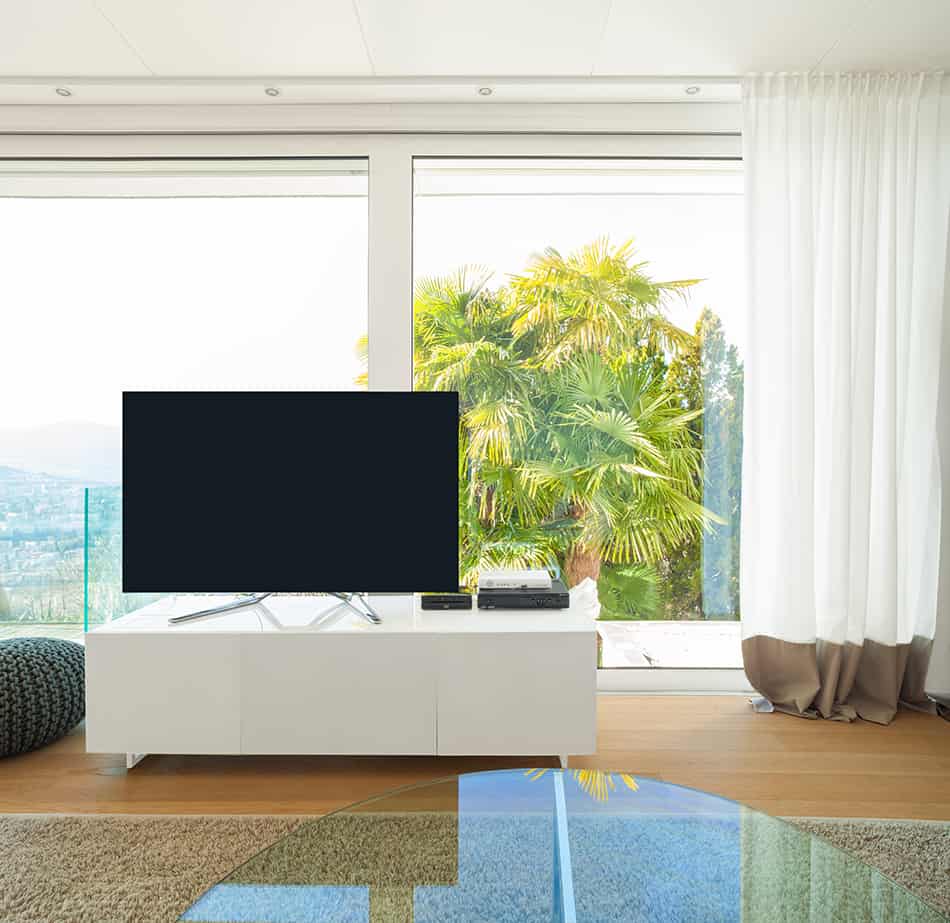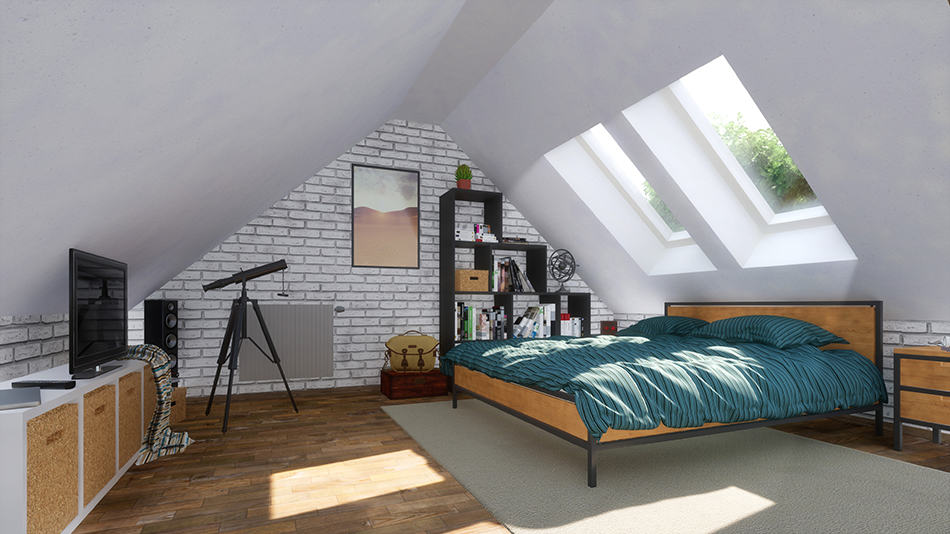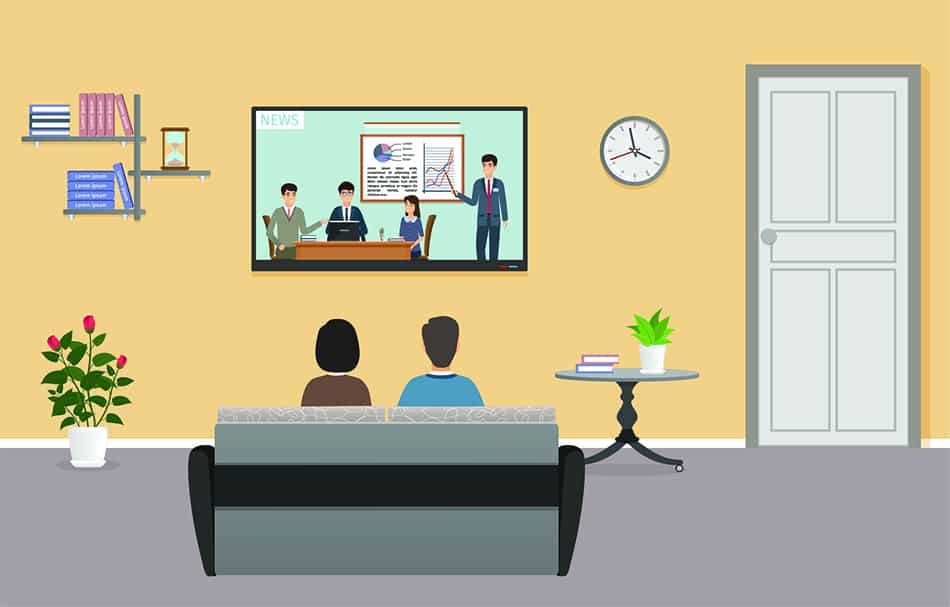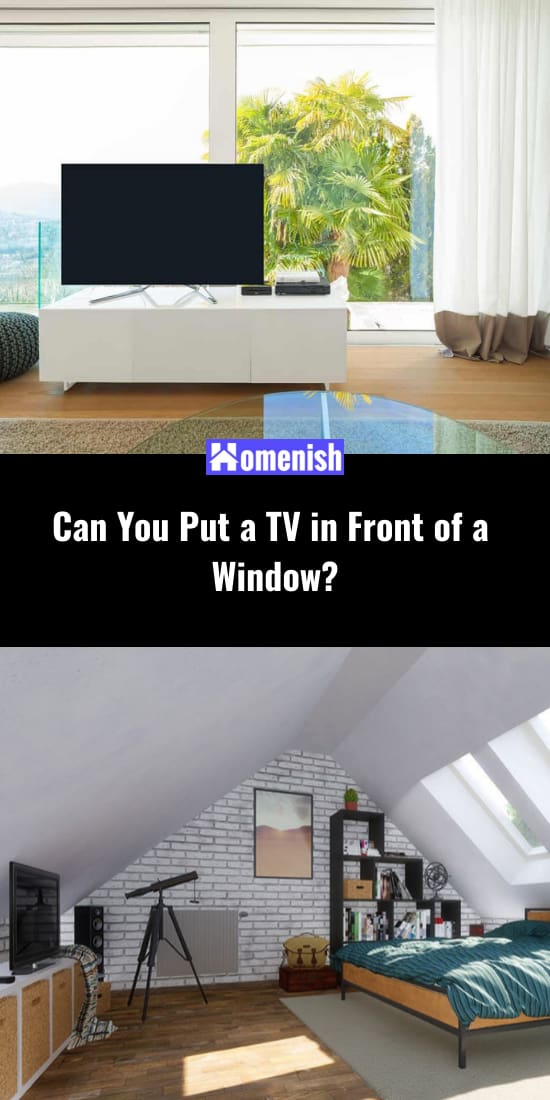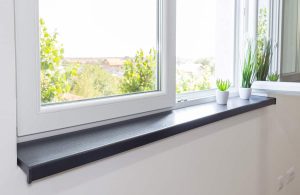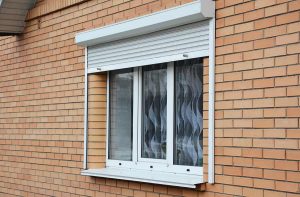The short answer is yes, you can put a TV in front of a window. There may be better places to put it, though, so we’ll go over all the options to help you decide.
Why You Shouldn’t Place a TV in Front of a Window
There are three reasons why people don’t put a TV in front of a window. The first is the light coming in from the window. You don’t want to be watching TV and having sunlight shining in your face. Not only is it hard on your eyes, but the light washes out the brightness of the screen, so it’s harder to actually see what you’re watching.
The second reason is you don’t want to block the window. It might be your only source of natural light in the room, or you may want to be able to open it get fresh air when the weather’s nice. Putting a TV in front of the window will make it more difficult to get to open and close or pull the curtains.
Third, placing a TV in front of a window could damage it. Sunlight shining on the back of the TV could cause it to overheat, and if you leave the window open, it could rain in on the TV. Cold drafts aren’t good for the TV either.
How to Place a TV in Front of a Window
All that being said, you can place a TV in front of a window if you don’t feel like you have any better option. What you’ll want to do is hang heavy blackout curtains over the window to block out the light and give the window better insulation.
Covering the windows with curtains will also look better from the outside so that passersby aren’t looking at the back of your TV.
Now, for some related questions about TV placement.
Should You Place a TV Across from a Window?
If you don’t want to place a TV in front of a window, how about putting it on the opposite wall, just across from the window?
Again, bad idea unless you cover the window with blackout curtains while you’re watching TV. The glare from the sunlight shining through the window onto the TV will make it difficult to see what you’re watching.
The exception is if you mount the TV high up on the wall. The sunlight coming in from the window will angle down and hit the bottom of the wall, so if you raise the TV high enough, it shouldn’t catch the glare.
What is the Best Height to Hang a TV?
How high you hang your TV depends on the size of your room and how far back your seating will be. We’ve all been in a movie theater with our heads tilted up uncomfortably sitting in the front row. When you’re further back, you might still need to look up, but the screen is much more at eye-level.
So, if you need to place your furniture closer to the TV, the TV needs to hang lower so that it’s more at eye-level. If you can push your seating back, the TV can hang higher. Because the TV is on a mount, you should also be able to tilt the TV downward, which will allow you to hang it higher while angling it down so that it’s still easy to see from your seat.
Where is the Best Place to Put a TV in a Room?
Open your windows and look around the room for where the sunlight coming in doesn’t hit the wall. In most cases, this will be a corner. You can buy a TV stand that fits into a corner or mount the TV in the corner. Even if there’s a window next to the TV as it sits in the corner, you won’t be looking straight in the direction of the window, so your eye fatigue will be lessened.
What About Skylights?
The good news is that skylights shouldn’t be much of a problem as long as you don’t position the TV directly under a skylight. There may be times during the day when the light will shine down at an angle and hit the TV, but for the most part, skylights shine directly down, and the light fills the middle of the room rather than shining on the walls.
Other Considerations for Where to Place a TV
Besides reducing eye fatigue and glare, there are two other factors to consider when positioning your TV. The first is the location of outlets. You’re going to need a place to plug in your TV and the DVD players, gaming consoles, etc. that connect to it, and you don’t want to have to snake cords across the room or along the wall to do it.
If you need to run a cord from an outlet on another wall, run one extension cord under the carpet, if possible, and connect it to a plug strip behind the TV. Your goal is to use as few cords as possible and both hide them for aesthetic appearance’s sake and keep them out of the way so that no one trips on them.
The second tip is to avoid placing the TV across from the natural walkway. You don’t want people walking through the room and interrupting your TV watching experience as they pass in front of the TV. If you can, place the TV in the corner furthest away from a door or an entrance to the room. You may be able to arrange your furniture so that people pass behind you instead of in front of you.
Does Your Seating Need to Face the TV?
In general, yes, the chairs, couches, sofas, etc. should face the TV, though they don’t need to face it directly. You can place furniture at a slight angle, just so that people don’t have to turn their necks to see the TV. Sitting for a long time with your neck turned leads to neck and shoulder cramps.
Furniture can be in front of a window as long as the sunlight doesn’t shine on the TV. In most cases, you don’t want to place furniture next to a window along the wall because the light from the window will be shining in the person’s face rather than shining behind them.
